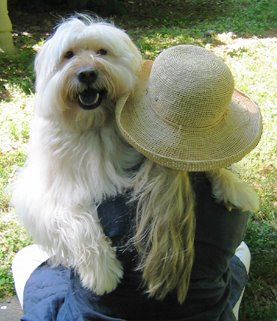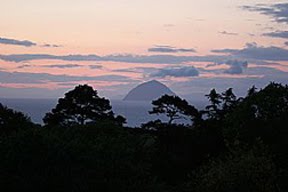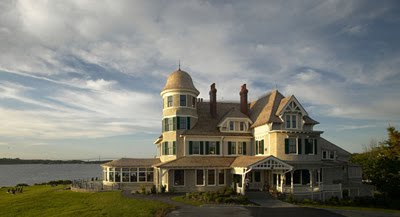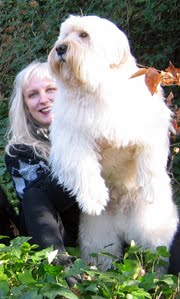“If I know a song of Africa, of the giraffe and the African new moon lying on her back, of the plows in the fields and the sweaty faces of the coffee pickers, does Africa know a song of me? Will the air over the plain quiver with a color that I have had on, or the children invent a game in which my name is, or the full moon throw a shadow over the gravel of the drive that was like me, or will the eagles of the Ngong Hills look out for me?”
Isak Dinesen
Tracings
There are fields of rapeseed in full bloom on the way to Kelmscott Manor. School bus yellow, they appear to have been painted rather than planted on the fields outside my car window. I ask the driver to stop at the top of the road leading to the tiny village; the pathway, lined with lacy faces of Cow Parsley and the drooping arms of newly green trees, is simply too tempting to resist. Each house in the village of Kelmscott looks like an illustration in an ancient book of fairy tales and the sweet fragrance of white flowers envelopes me as I stroll past. This is a road I’ve longed to travel for years.
The pathway ends in fields that carpet the vista in green. The manor house is on my right, hidden by lichen-covered stone walls, and when I catch my first glimpse of it, so familiar to me from photographs and paintings, I still gasp at its beauty. Well, of course I do, for this was the home of William Morris who once famously said, “Have nothing in your house that you do not know to be useful, or believe to be beautiful”. Through the years, that quote, and the design philosophy and aesthetic of Mr. Morris, have been a confirmation that the way I saw the world was neither unique nor misguided. And at Kelmscott Manor, William Morris practiced what he preached.
To wander this home that William Morris shared with his wife, Jane, and for awhile, his best friend (and Jane’s paramour), the artist Dante Gabriel Rossetti, is a dream come true. I pause for a long while in Rossetti’s tapestry-lined studio, beside the long table where Jane would embroider and William would design, and could almost swear I hear sounds long past - the swish of a green skirt as it moves toward the window, the dusty scratch of a pencil on paper. I have no doubt these beautiful, beloved rooms soaked up a bit of the creative souls that once lived here - a shadow, a whisper, a hint - for those who found themselves able to see.
Before I visited Culloden Moor last September a friend told me she’d heard it was one of the most haunted landscapes in Britain. “And”, she said, “if anybody feels it, you will.”
I did, and I have. It’s never been difficult for me to sense the spirits of those left behind. I do believe rooms and landscapes retain a bit of the departed ones who lived amongst them -those who loved there, or died there, who dreamed there or cried there - and like mists on the hillside, those spirits drift past, remembered. They are in the wood and stone of family houses, in the blades of grass on battlefields. Perhaps it takes a certain kind of spirit to recognize them. If so, I’m grateful to possess that certain spirit.
Climbing the well-worn stone steps of the Brontë parsonage in Haworth I could almost feel the light touch of Charlotte Brontë’s small hand atop mine as I ran it along the polished wood of the banister. As I stood before the table where the sisters wrote, colours swirled and danced into paleness, almost evaporating, and I could nearly see the three of them sitting there, heads bent over their work. At Monk’s House, the spirit of Virginia Woolf was so strong it was nearly tangible. She was in the apple green of her sitting room walls, in the leaves that hung like garlands over the garden shed in which she wrote. I had to turn back from following the pathway of her final walk to the river, so heavily did I feel her presence at my side, absorbed like rain into the very air around me.
I have never, I don’t think, seen a ghost. But I have felt these faded tracings of departed spirits in the places where they walked. And now I wonder, much like Isak Dinesen wondered in the quotation above, do these places now feel an inkling of me? Did I perhaps leave a bit of my soul in these corners of the earth that I love so much? Just an echo of my laugh, a faint scent of my perfume. Could these rooms, these seasides and hills, possibly remember me?
Last Spring, high up on the moors of Yorkshire, I followed the oft-traveled way of the Brontë sisters, out over the hills to Ponden Kirk where the landscape falls away before you into greens and golds and the wind is a lion at your back. Upon returning, I noticed I’d lost an earring and was surprised to find myself almost unspeakably happy to have done so. For a little bit of me will stay there now, blown about by the gales, buried in the soil with the long ago footprints of Charlotte, Emily and Anne.
The moors must remember me now.





































